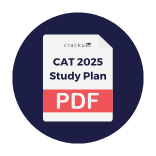ISRO Scientist or Engineer Electrical 2018
For the following questions answer them individually
ISRO Scientist or Engineer Electrical 2018 - Question 21
Find the voltage drop $$(V_d)$$ across Silicon diode in the circuit below.

ISRO Scientist or Engineer Electrical 2018 - Question 22
In the circuit given below Inductor used is ideal inductor, What is the conduction angle of diode?

ISRO Scientist or Engineer Electrical 2018 - Question 23
A single phase full bridge converter supplies power to constant current load. If the triggering angle is $$45^\circ$$, what is the input power factor of the converter?
ISRO Scientist or Engineer Electrical 2018 - Question 24
Input voltage $$v = 230 \sin(100 \pi t)$$ Volts is given to a converter and the current drawn by the converter is $$i = 20 \sin \left(100 \pi t - \frac{\pi}{3}\right) + 10 \sin(300 \pi t + 45^\circ) + 2 \sin \left(700 \pi t - \frac{\pi}{6}\right)$$ Amps. What is the active power drawn by the converter?
ISRO Scientist or Engineer Electrical 2018 - Question 25
If a boost converter operates with a duty ratio D = 1 then output voltage is
ISRO Scientist or Engineer Electrical 2018 - Question 26
In a single phase asymmetrical half controlled rectifier with firing angle ‘$$\alpha$$’ feeds a constant current load. What will be conduction angle of diodes?
ISRO Scientist or Engineer Electrical 2018 - Question 27
In a three phase half controlled rectifier with constant current load and freewheeling diode, what is the fraction of cycle the diode conducts? Consider firing angle $$(\alpha)$$ of thyristors greater than $$60^\circ$$.
ISRO Scientist or Engineer Electrical 2018 - Question 28
A step down chopper operates from a $$D.C.$$ voltage source $$V_s = 400 V$$ and feeds a $$DC$$ motor armature with a back emf $$E_b = 300 V$$. From the oscilloscope traces it is found that the current rises for a time $$t_r = 10$$ m sec and falls to zero over time $$t_f = 5$$ m sec and remains zero for a time of $$t_o = 6$$ m sec in every chopping cycle. Then, average $$DC$$ voltage across the freewheeling diode will be
ISRO Scientist or Engineer Electrical 2018 - Question 29
A single phase inverter has a square wave output voltage. What is the percentage of fifth harmonic component in relation to fundamental component present in the output voltage?
ISRO Scientist or Engineer Electrical 2018 - Question 30
In the LC circuit shown in the figure initial current through the inductor is zero, initial voltage across the capacitor is 100 V. Switch S is closed at t = 0 sec. The current through the circuit is


